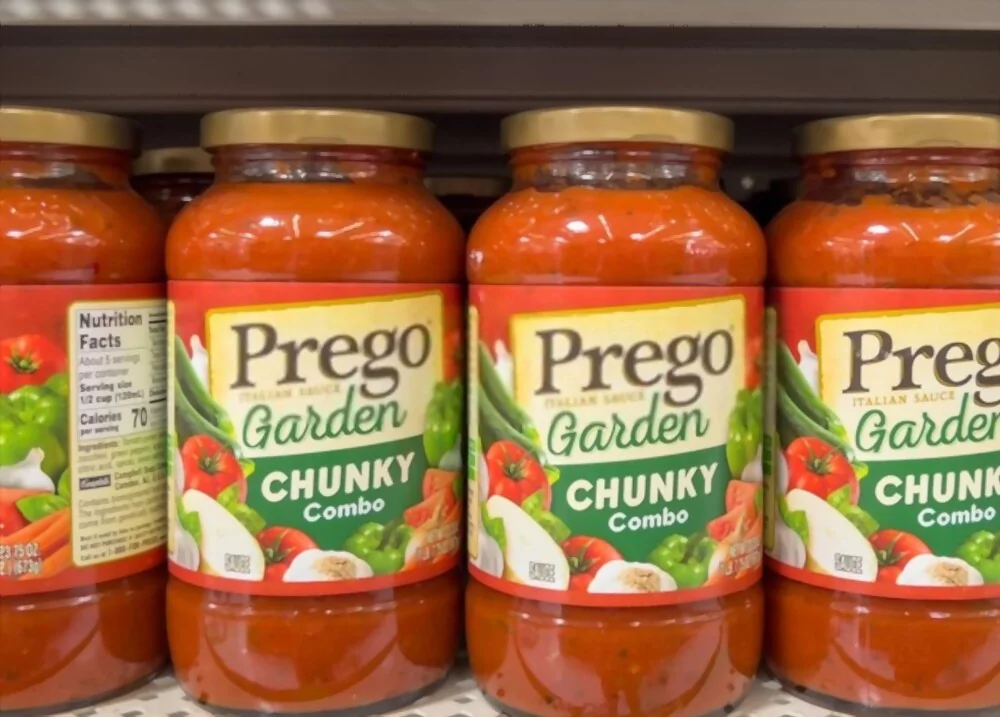Summary: Conopco, maker of Ragu pasta sauce, and Campbell’s, maker of Prego pasta sauce, were competitors in the jarred pasta sauce market in the late 1980s. This saga takes us through one claims lawsuit and one NAD decision, following an aggressive comparative marketing narrative conducted by Campbell’s, which resulted in capturing $600 million of the sauce market. How did they do it? Was it legal? Was it fair? Rotten tomatoes or false and deceptive advertising, this sauce saga rewrote the rules in sensory claims and food science.
Case Facts
The pasta sauce market was an estimated $1.3 billion dollar business, and Conopco’s product, Ragu Old World Style, had a market share of about 60% in the late 1980s. That’s when Campbell’s entered with its own product, Prego Thick and Chunky. Other competitors at the time were Hunt’s, Classico, and Healthy Choice. Campbell enlisted the services of psychophysicist and food science pioneer Howard Moskowitz to find the best market for its cause, by conducting nationwide consumer surveys. While Campbell’s was looking for a sauce that everyone could enjoy, Moskowitz learned that one third of US pasta consumers preferred a chunky sauce. Thus, Prego Thick and Chunky was born.
Campbell’s advertising agency in 1988, FCB/Leber Katz, determined that the best way to capture one third of the spaghetti sauce market was to place Campbell’s Prego next to Ragu Old World Style sauce in an at-home setting to compare the two sauces’ thickness. Conopco filed a false and deceptive advertising claim, alleging that the ad suggested that Prego was thicker than all Ragu sauces, when it was not as thick as some Ragu sauces, particularly the Thick & Hearty variety. Conopco complained first to the three then-major television networks, and then brought a case at the NAD. Both complaints resulted in orders to Campbell’s to specify which variety of Ragu the commercial was comparing to Prego.
Perhaps believing that these changes were weak sauce, Conopco filed a federal false advertising lawsuit in 1993–more than five years after Campbell’s began running its comparative ads. That delay ultimately cost Conopco, which lost the case on a post-trial motion for summary judgment by Campbell’s. The judge in the case found that Conopco’s delay prejudiced Campbell’s–that is, put it at a disadvantage––because in that time, Campbell’s had invested over $75 million in marketing that staked out its market position as the thick sauce. Earlier in the dispute, the judge found, Campbell’s could have refocused its marketing efforts on another marketing claim, such as the most authentic sauce or the sauce with the best value. However, when the decision was handed down, competitors had staked out their own claims to those positions. The 2nd U.S. Circuit Court of Appeals ultimately agreed and affirmed the judgment.
Tomato-Slinging Market Research, Sensory Claims, and Advertising Campaigns
While that particular case ended, the competition remained simmering for years–boiling over at the NAD in 2013 and two times in 2017. One 2017 dispute centered around an ad released by Campbell’s that claimed “even Ragu users prefer the taste of Prego Traditional 2-to-1.” To illustrate this, the ad showed two 12-month-old babies and said “We took lifelong pasta experts and gave one Prego Traditional and one Ragu Old World Style Traditional. This is what happened.” The toddler who was eating pasta dressed with Prego Traditional was shown enjoying the food–messily–but the other was refusing to touch pasta dressed with Ragu. A disclaimer at the bottom of the ad noted that the taste test that substantiated this claim involved eaters ages 6 and over.
Mizkan America, Inc., the new owner of Ragu, challenged this commercial for multiple reasons, including that the depiction of the toddlers could mislead viewers into thinking the taste test was performed with children of that age. This, the company noted, would be difficult to substantiate. Campbell’s argued that it used toddlers as a comedic device and described them ironically as experts, on purpose, and that the effect was non actionable puffery, rather than a sensory claim, requiring substantiation.
The NAD agreed with Campbell’s, deciding that “The depiction of the toddlers in the commercial amounts to puffery and does not constitute a claim about the preferences of toddlers.” The NAD also clarified that reasonable consumers understand that it is impossible to conduct a reliable taste test using the preferences of very young children (who often prefer eating boogers and air), and that the joke that they were “lifelong pasta experts,” as well as the messy eating, emphasized that the children weren’t really able to be part of taste tests.
Sensory Claims, Sensory Research in Marketing, and the Legacy of Spaghetti in Food Science
The two-decade sauce saga shows how comparative sensory claims, when marketed effectively, can make a substantial impact on product performance. In the decade following Prego’s original “thick and chunky” campaign, the brand captured $600 million in market share, overtaking Ragu. The sensory research and analysis conducted by Howard Moskowitz, discovering that one third of Americans preferred a chunky spaghetti sauce, has been credited with many brand extension strategies. Today, we see dozens of types of pasta sauces, and companies now target market segments through reliably conducted sensory surveys.
However, to compete using sensory claims in advertising, those claims must be substantiated. If you are looking to substantiate a sensory claim or conduct reliable sensory research, contact MMR Strategy Group. We are experts in designing and conducting sensory market research.
